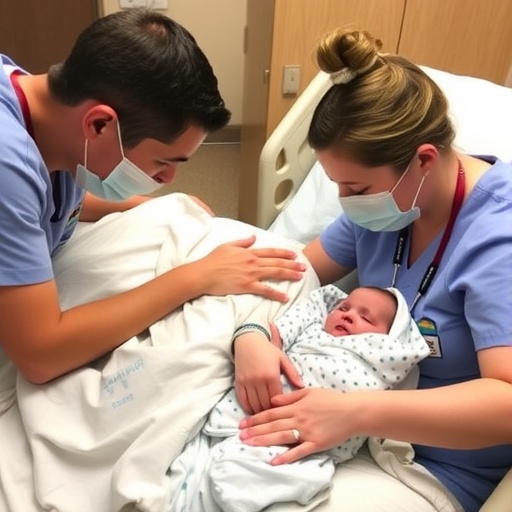WINSTON-SALEM, N.C. – Jan. 4, 2023 – Prostate cancer is the second-leading cause of cancer death in men with more than 34,000 deaths in the U.S. each year, according to the American Cancer Society. But guidelines for prostate cancer screening are continually shifting, leading to uncertainty among patients and providers on when and if screening tests should be ordered.

Credit: Wake Forest University School of Medicine
WINSTON-SALEM, N.C. – Jan. 4, 2023 – Prostate cancer is the second-leading cause of cancer death in men with more than 34,000 deaths in the U.S. each year, according to the American Cancer Society. But guidelines for prostate cancer screening are continually shifting, leading to uncertainty among patients and providers on when and if screening tests should be ordered.
In a new study from Wake Forest University School of Medicine, researchers recently examined prostate screening testing among primary care providers and found that the tests are frequently used, even when they provide little value to patients.
The study appears online in the current issue of the Journal of the American Board of Family Medicine.
“Screening is complex because while some prostate cancers are aggressive, most grow slowly and may never cause symptoms or death,” said Chris Gillette, Ph.D., associate professor of PA Studies at Wake Forest University School of Medicine and principal investigator of the study.
According to Gillette, current prostate cancer screening guidelines recommend that providers discuss the benefits and harms of prostate cancer screening for men between the ages of 55 and 69.
There are two tests that providers can use that might help diagnose prostate cancer. One is a digital rectal exam (DRE), and the other is a blood test that measures the amount of prostate-specific antigen (PSA). Elevated levels of PSA in the bloodstream can be indicative of prostate cancer.
However, these screening tools often lead to false-positive results. A false-positive test increases the likelihood of overdiagnosis and more aggressive testing that might result in harm to the patient with little to no benefit.
“As a man ages, the risk for a false-positive result increases,” Gillette said. “Men who are 70 years and older are at the highest risk for overdiagnosis.”
The United States Preventive Services Task Force recommended against any PSA-based screening in men in 2012, but then changed their recommendation in 2018 to not screen men over the age of 70. In 2013, the American Urological Association also recommended against PSA-based prostate cancer screening for men over the age of 70.
For this study, Gillette and team conducted a secondary analysis of the National Ambulatory Medicare Care Survey datasets from 2013-2016 and 2018. The dataset is a nationally representative sample of visits to non-federal office-based physician clinics.
In looking at primary care visits for men over the age of 70, the research team found 6.71 PSA tests and 1.65 DREs per 100 visits. Gillette noted that the research team restricted this analysis to primary care providers and those patients without any clear medical history that would necessitate a PSA or DRE as a diagnostic test.
“We also found that providers who order a lot of tests are more likely to order low-value screening such as PSA and DRE,” Gillette said.
Specifically, for each service ordered, there was a 49% increase in the odds of a low-value PSA and a 37% increase in the odds of a low-value DRE.
According to Gillette, providers might be responding to patient requests when ordering these screening tests or using what’s known as a “shotgun” approach to medical testing where all possible tests are ordered during a medical visit.
“However, as health care systems move toward a more value-based care system—where the benefit of services provided outweighs any risks—providers need to engage patients in these discussions on the complexity of this testing,” Gillette said. “Ultimately, when and if to screen is a decision best left between a provider and the patient.”
Journal
The Journal of the American Board of Family Medicine
DOI
10.3122/jabfm.2022.220185R1
Subject of Research
People
Article Title
The Prevalence of Low-Value Prostate Cancer Screening in Primary Care Clinics: A Study Using the National Ambulatory Medical Care Survey
Article Publication Date
2-Jan-2023




